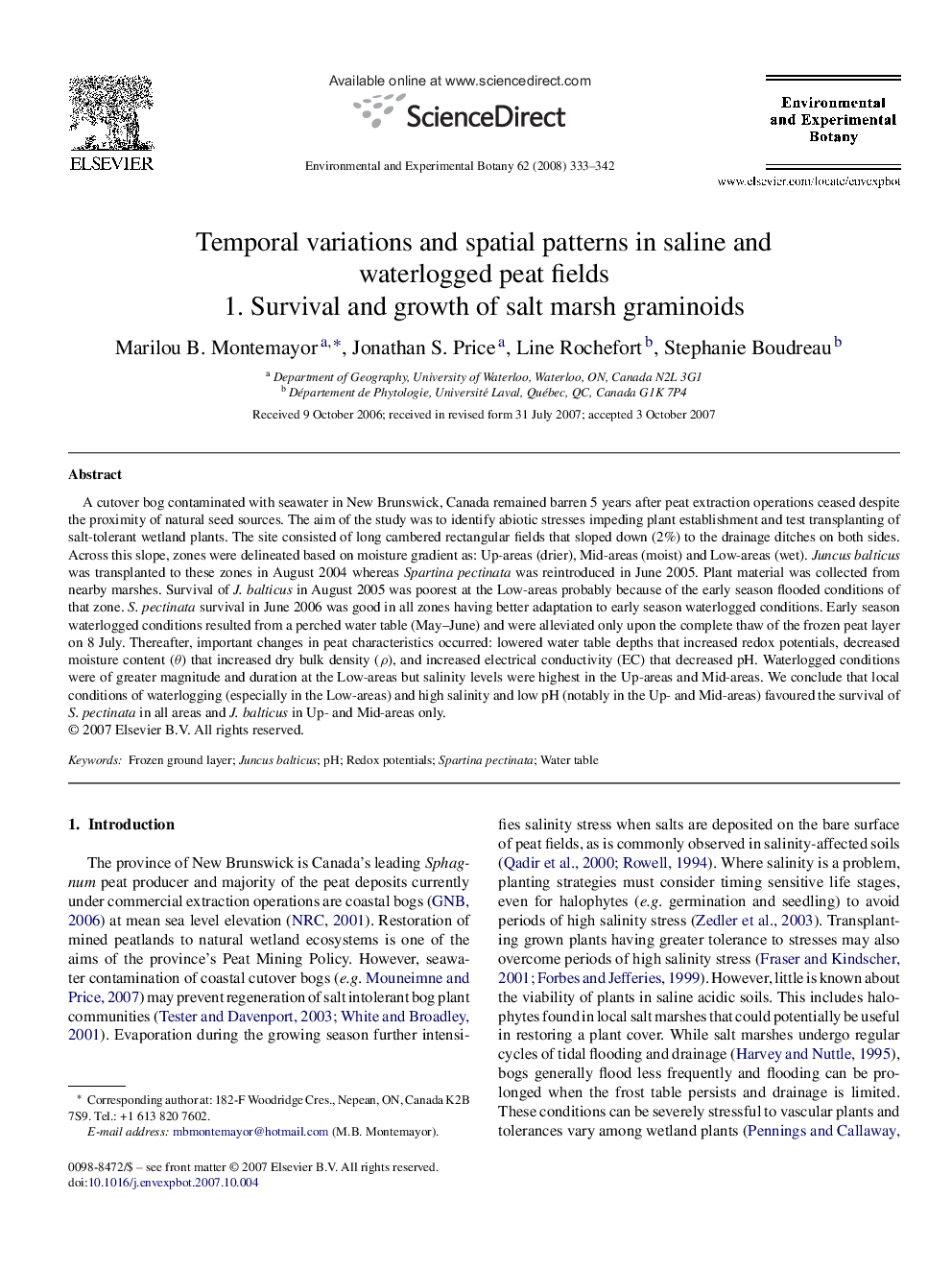| کد مقاله | کد نشریه | سال انتشار | مقاله انگلیسی | نسخه تمام متن |
|---|---|---|---|---|
| 4555444 | 1329259 | 2008 | 10 صفحه PDF | دانلود رایگان |

A cutover bog contaminated with seawater in New Brunswick, Canada remained barren 5 years after peat extraction operations ceased despite the proximity of natural seed sources. The aim of the study was to identify abiotic stresses impeding plant establishment and test transplanting of salt-tolerant wetland plants. The site consisted of long cambered rectangular fields that sloped down (2%) to the drainage ditches on both sides. Across this slope, zones were delineated based on moisture gradient as: Up-areas (drier), Mid-areas (moist) and Low-areas (wet). Juncus balticus was transplanted to these zones in August 2004 whereas Spartina pectinata was reintroduced in June 2005. Plant material was collected from nearby marshes. Survival of J. balticus in August 2005 was poorest at the Low-areas probably because of the early season flooded conditions of that zone. S. pectinata survival in June 2006 was good in all zones having better adaptation to early season waterlogged conditions. Early season waterlogged conditions resulted from a perched water table (May–June) and were alleviated only upon the complete thaw of the frozen peat layer on 8 July. Thereafter, important changes in peat characteristics occurred: lowered water table depths that increased redox potentials, decreased moisture content (θ) that increased dry bulk density (ρ), and increased electrical conductivity (EC) that decreased pH. Waterlogged conditions were of greater magnitude and duration at the Low-areas but salinity levels were highest in the Up-areas and Mid-areas. We conclude that local conditions of waterlogging (especially in the Low-areas) and high salinity and low pH (notably in the Up- and Mid-areas) favoured the survival of S. pectinata in all areas and J. balticus in Up- and Mid-areas only.
Journal: Environmental and Experimental Botany - Volume 62, Issue 3, April 2008, Pages 333–342